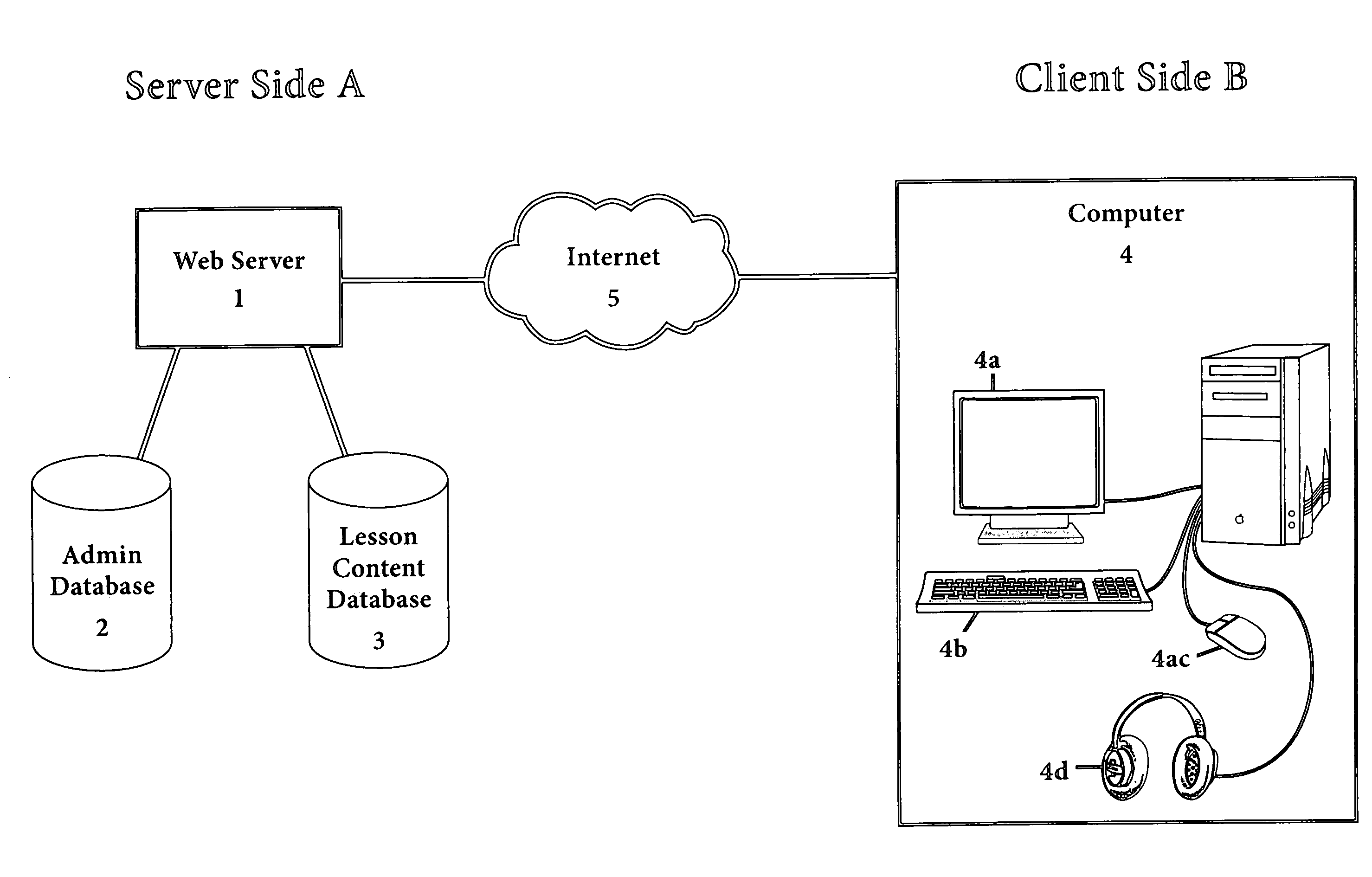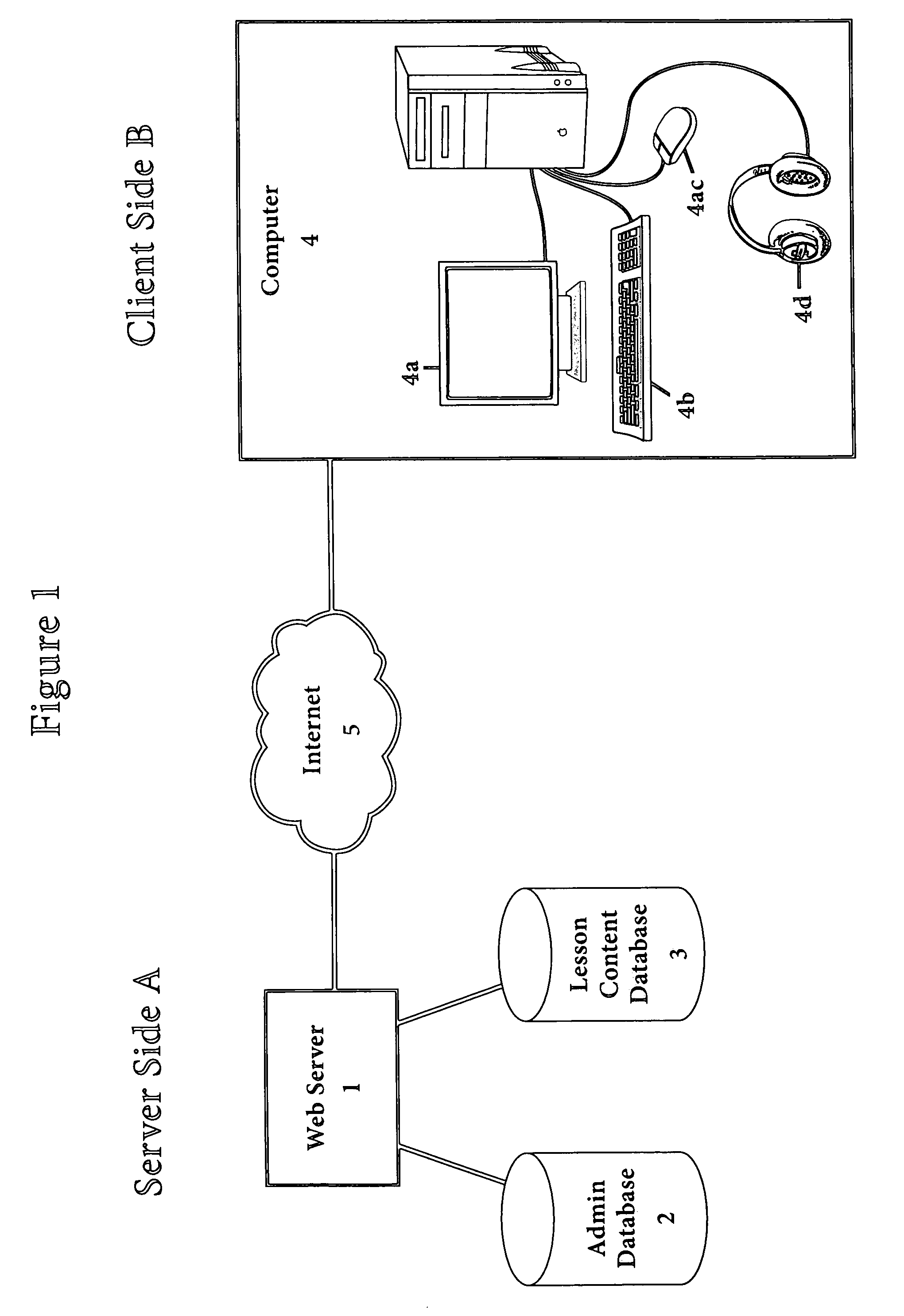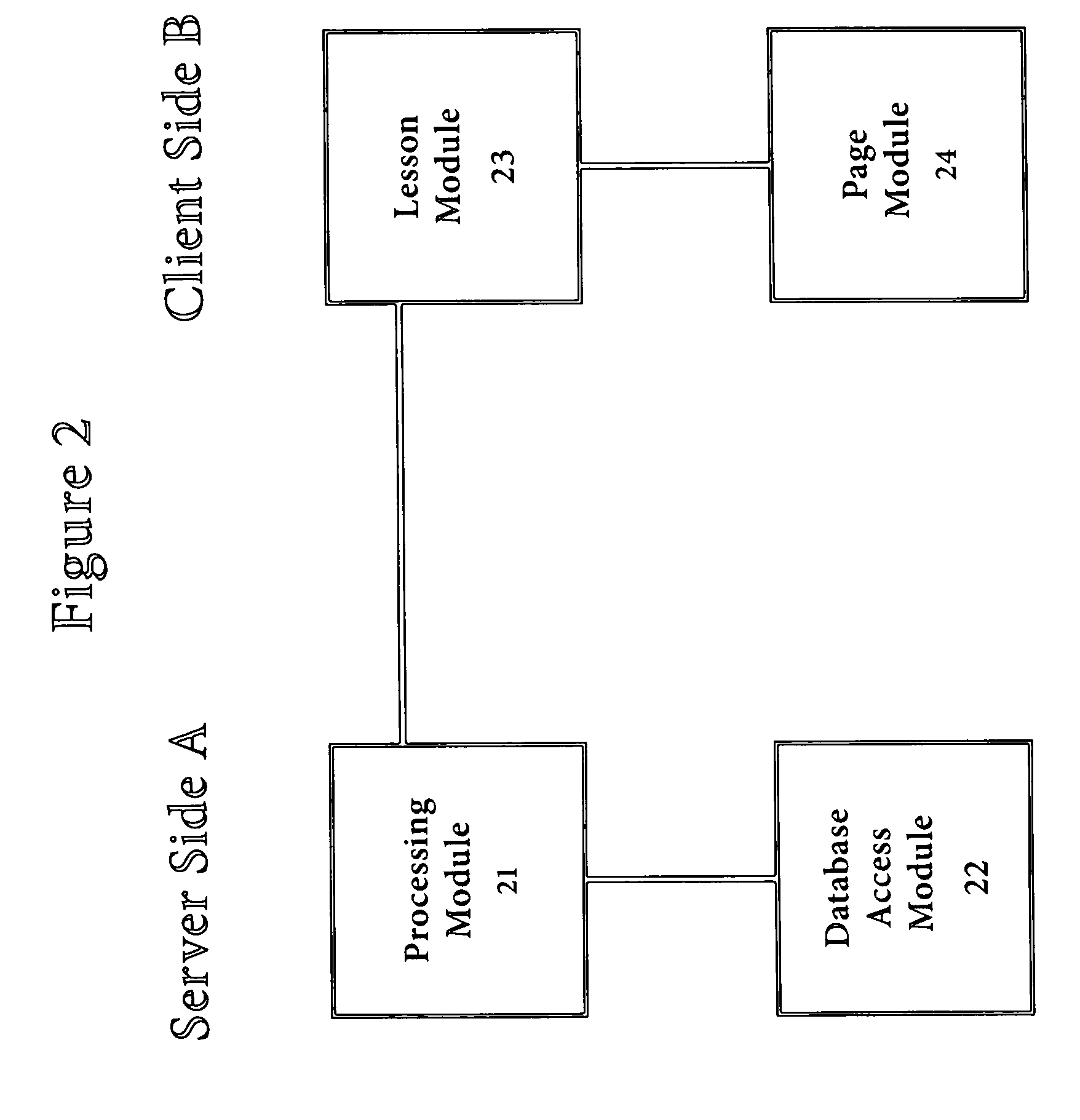Educational software with embedded sheltered instruction
a technology of embedded instruction and educational software, applied in educational appliances, teaching apparatus, electrical appliances, etc., can solve the problems of high failure rate of academic subject standardized assessments by non-native-language students, poor achievement manifesting itself in high student dropout rates, etc., to improve the virtual learning of academic subjects and more flexibility in studying
- Summary
- Abstract
- Description
- Claims
- Application Information
AI Technical Summary
Benefits of technology
Problems solved by technology
Method used
Image
Examples
Embodiment Construction
[0001]1. Field of Exemplary Embodiment of the Invention
[0002]A method, a system, and an apparatus consistent with an exemplary embodiment of the present invention relates to a virtual learning system that educates non-native-language students in various academic topics unrelated to languages. More particularly, an exemplary embodiment of the present invention is consistent with providing a virtual learning system for learning and teaching academic topics unrelated to languages in a non-native language by embedding sheltered instruction into interactive multimedia content.
[0003]2. Description of the Related Art
[0004]The number of students in United States schools for whom English is a non-native language has increased dramatically in recent years. Such students must be educated in United States schools in academic subjects unrelated to languages (hereinafter “subject”) such as mathematics, science, business studies, etc. Schools by and large have been unsuccessful in this effort as e...
PUM
 Login to View More
Login to View More Abstract
Description
Claims
Application Information
 Login to View More
Login to View More - R&D
- Intellectual Property
- Life Sciences
- Materials
- Tech Scout
- Unparalleled Data Quality
- Higher Quality Content
- 60% Fewer Hallucinations
Browse by: Latest US Patents, China's latest patents, Technical Efficacy Thesaurus, Application Domain, Technology Topic, Popular Technical Reports.
© 2025 PatSnap. All rights reserved.Legal|Privacy policy|Modern Slavery Act Transparency Statement|Sitemap|About US| Contact US: help@patsnap.com



